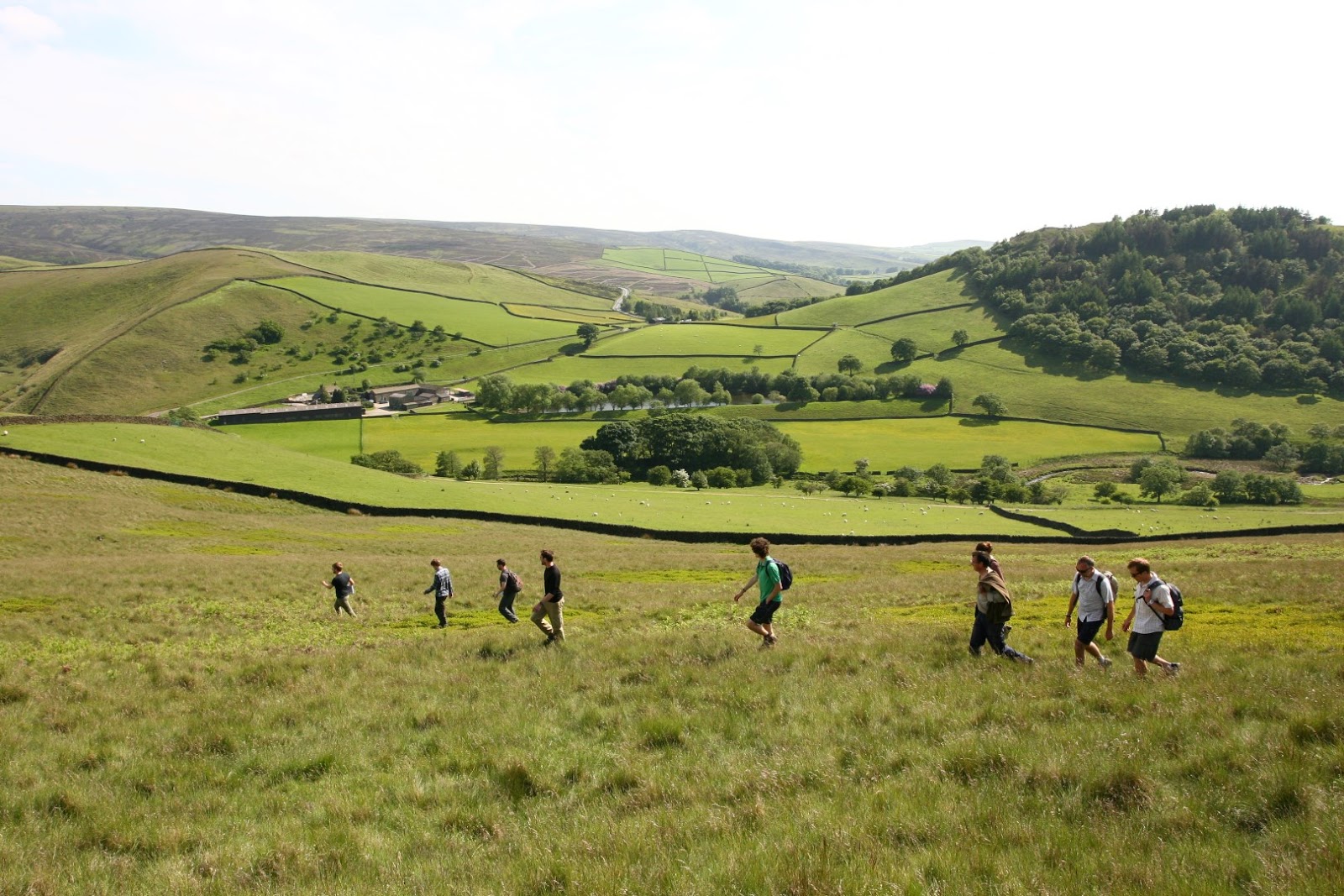By studying the glacial 'footprint' of landforms and sediments imprinted on
a landscape, it can be possible to make interpretations about how former ice
sheets and glaciers flowed, how far they extended, and their dynamics (how they behaved over time). However, it becomes more difficult to reconstruct these ice masses where this geological evidence is sparse
(such as here in the Peak District).
 |
| A computer simulated reconstruction of the British-Irish Ice Sheet at its maximum extent during the last ice age. Ice
would have flowed from all major mountain areas towards the ice margins
via a number of fast flowing streams of ice. The Peak District lay
on the ice sheets southern margin, and so the exact degree of glacial
influence in this area is still under debate. |
|
|
An alternative method for reconstructing past glacial activity is to use a numerical model, i.e. producing a virtual simulation of the ice cover on a
computer. These models are governed by equations, which define how ice
accumulates, flows and melts, as well as environmental conditions that control
climate change, sea level fluctuations, and crustal flexing as the weight of the ice presses down on it. Numerical modelling
can therefore be a powerful tool for providing insights into how past
ice sheets behaved through time, particularly so if modelled output can also be
guided by geological evidence.
Herein lies the problem in trying to simulate the 'Peak District Ice Cap'.
Its sensitive position on the periphery of the main British-Irish Ice Sheet,
small area, as well as a lack of evidence for its maximum extent
and potential age, means we have little to go on.
By fortunate coincidence, a recent modelling study of the Welsh Ice Cap by Henry Patton included the Peak District National Park within
its study area. By using these reconstructions of the much larger and better
constrained ice mass covering Wales to fix environmental conditions, we therefore have a guide to help us to model the Peak District glaciation with more confidence.
Results
Initial model experiments have so far indicated that there was probably
significant ice cover over The Peaks for around 2,500 years during the last ice age. The Google Earth
animation (at the end of this blog) shows one model run,
from the ice cap's inception through to its maximum extent and subsequent
melting.
 |
| Model output (ice thickness, surface velocity and percentage time warm-based) of the Peak District ice cap |
Notably, the model predicts the ice cap to have been predominantly
frozen to the underlying bedrock, and
also very slow-moving, with surface speeds
no greater than
40 m per year.
Both these characteristics could help to explain the dearth of erosional
landforms found in the Peak District. The model also suggests that the ice was relatively thin, reaching up to around 150 m thick over the hills,
and 250 m thick within adjacent valleys.
These results offer a tantalizing prediction of an extensive, largely
static and non-erosive 'Peak District Ice Cap' during the last glaciation of
Britain. However, model outputs are only ever as good as the data used to
constrain them. Whether these experiments offer a true picture of past glacial
events will only be resolved through further detailed empirical data
collection.
written by Henry Patton




.JPG)



